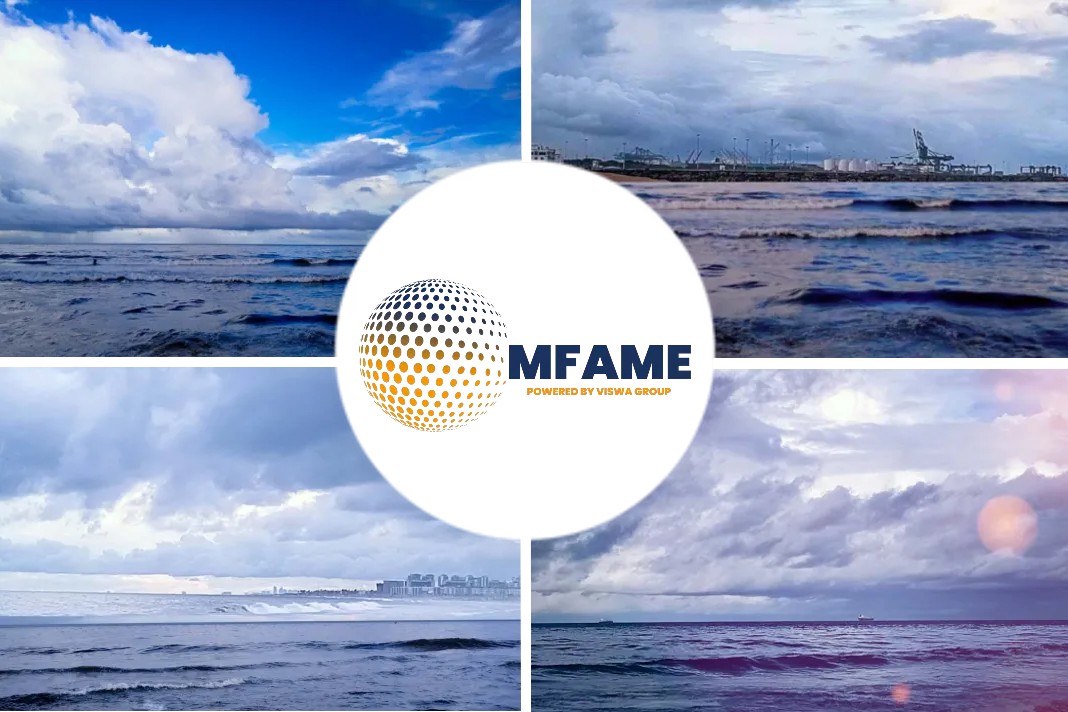According to an article published in Nafsgreen, Norsepower Oy Ltd., together with project partners Maersk Tankers, Energy Technologies Institute (ETI) and Shell International Trading and Shipping Company Ltd., announced successful trial results of two Norsepower Rotor Sails onboard the Maersk Tankers product tanker, Maersk Pelican.
Fuel Cost Curtailing Rotor Sails
The Rotor Sails are large, cylindrical mechanical sails that spin to create a pressure differential, the Magnus Effect, that propels the vessel forward; in this instance a Maersk Tankers’ Long Range 2 (LR2) product tanker vessel.
The Rotor Sails deliver auxiliary wind propulsion to the vessel – which have operated in conditions ranging from tropical climate to arctic conditions in Europe, Middle East, Asia and Australia – resulting in the optimisation of energy efficiency and a reduction in fuel consumption.
How was it done?
The Rotor Sails were installed onboard Maersk Pelican in August 2018. As part of the test, the aggregated total fuel saved from 1 September 2018 to 1 September 2019 was 8.2% savings. This is equivalent to approximately 1,400 tonnes of CO2.
The savings were confirmed by comparing detailed performance information to a baseline established with full scale measurements and computational analysis done for the vessel prior the Rotor Sail installation.
Usable and Safe for Use, Says Operators
Independent experts from Lloyd’s Register’s (LR’s) Ship Performance Group have analysed and validated the performance data during the project to ensure an impartial assessment. In addition, technical and operational insights for performance studies will also be published.
“During the one-year trial period on Maersk Pelican, crew and operators have reported positively on the usability, safety and performance of the Rotor Sails in all conditions,” says Tommy Thomassen, Chief Technical Officer at Maersk Tankers.
A CO2 Reduction Breakthrough
“Maersk Tankers and the industry have developed and tested a number of technological solutions, which contribute to reducing fuel consumption and associated emissions. We see wind technology as one of the technologies that can give us a real breakthrough in reducing CO2 and help us achieve our emission-reduction target of 30% by 2021. We will closely follow the development around the financial and commercial viability of the technology for potential future installations on some of our other larger vessels, while we have decided that Maersk Pelican will continue to sail with the Rotor Sails.”
Dr. Chris Craddock, Technical Advisory & Ship Performance Manager, Lloyd’s Register, said, “As the independent performance verifier of the Norsepower Rotor Sail, LR sees our role as a trusted independent expert, assessing the return on investment for new technologies that address the challenges of decarbonisation. Wind power technologies are part of the solution, and the Norsepower Rotor Sail has proven itself to save fuel and reduce emissions.”
Performance Meets Expectations
Tuomas Riski, CEO at Norsepower is pleased with the results, as they meet expectations. He sees great opportunities for the technology: “With the Maersk Pelican, there are three vessels in daily commercial operation using Norsepower’s Rotor Sails. Each of these cases represents a very different vessel type and operational profile, demonstrating the widespread opportunity to harness the wind through Rotors Sails across the maritime industry.”
In a simulation model, Norsepower shows that with the currently installed Rotor Sails operating in global average wind conditions of all shipping routes yields a savings potential up to 12% on fuel and emissions, including CO2. Based on the same simulation model, Norsepower estimates that applying Rotor Sail technology to the entire global tanker fleet would reduce annual CO2 emissions by more than 30 million metric tonnes, which corresponds to emissions of about 15 million passenger cars.
“Through future advances in technology we believe the Rotor Sails can contribute even more as one of the solutions to tackle CO2 emissions within the shipping industry,” says Riski.
Accelerating Low Carbon Technologies
Darryl Hylands, Programme Manager, HDV, Energy Technologies Institute (ETI) said,
“This is one of ETI’s large scale demonstration projects aiming to accelerate low carbon technologies. Successfully demonstrating this technology at scale shows its capability to significantly reduce fuel costs and environmental impact of the shipping industry.
On certain routes during the trial the vessel achieved fuel savings way beyond the average of 8.2% even with average wind conditions.
There is a clear potential to achieve higher fuel savings, and hence CO2 savings, on routes with more favourable wind conditions, which further improves the commercial viability of the technology.”
First Data Verified Wing Propulsion Technology
Norsepower’s Rotor Sail solution is the first data-verified and commercially operational auxiliary wind propulsion technology available for the global maritime industry. When wind conditions are favourable the main engines can be throttled back, saving fuel and reducing emissions, while maintaining speed and voyage time. Each Norsepower Rotor Sail is made using lightweight composite sandwich materials, which ensure the Rotor Sail remains well-balanced and offers a hi-tech, low maintenance solution.
Did you subscribe to our daily newsletter?
It’s Free! Click here to Subscribe!
Source: NafsGreen

















